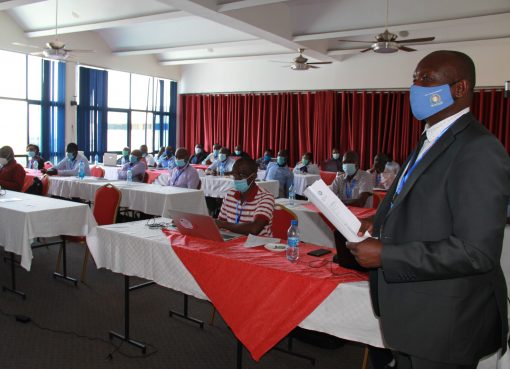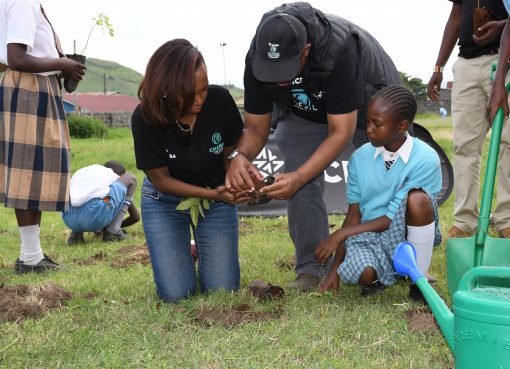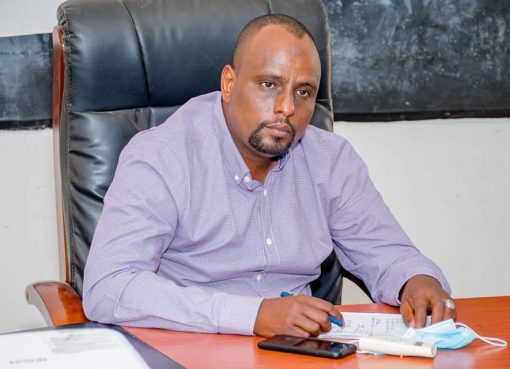Aquaculture through cage fish farming is slowly but surely gaining popularity in the country as farmers are now shifting their attention from the much cherished crop and livestock farming.
From the time when President Uhuru Kenyatta emphasised on the importance of food security in his big four agenda, the agricultural sector through the aquaculture sub-sector has played a major role in ensuring its achievement.
This is evident from the rising number of fish farmers all over the country and Homa Bay as a county has not been left out.
Since the introduction of cage fish farming in 2013 through the county government, many farmers in the region have ventured into the new practice which involves growing fish in existing large water bodies while enclosed in a net cage allowing free flow of water.
In this aquaculture production system, a large number of fish are held in a floating frame, net materials and mooring system with a round or square shaped floating net.
The practice which is gaining momentum in the region has also caught the attention of both the local and international investors who are investing their time and finances into it.
A Non-Governmental Organisation dubbed Echo Network Africa (ENA) has played a major role in training women who practice cage fish farming in the region.
The NGO has been empowering and impacting the lives of women in different sectors for the last 36 years.
Litare Fish Farmers Women Group, belonging to small-scale cage farmers in Rusinga Island, is among the beneficiaries of ENA in the region. The group was founded in 2019 and has brought together 25 women across the island.
Esther Auma Otieno, the chairperson of the group narrates how they have been progressing since the introduction of cage fishing in 2019.
Auma says due to shortage of fish in Lake Victoria, they were stranded and ended up relying on other businesses that generated low income.
“In the past year there has been a shortage of fish in Lake Victoria forcing farmers to engage in other businesses that yield low income. This situation worsened the living standards of many,” she narrates.
Since the introduction of the group to cage fishing by ENA, they have only managed to get one cage. The cage, which measures 100 square meters, accommodates over 30,000 fish.
“Since 2019 we have only one cage measuring 10m by 10m and accommodates 35,000 fish,” she says.
The group’s first production was in 2021 where the result was below their expectation. However, she notes that it did not dishearten them because they saw it as a sign of progress.
“We produced only 2 metric tons in that year due to the small number of fish that were in our cage by then, though it was not what we had expected. We saw it as a stepping stone to the next level,” she says.
Auma explains that after harvesting, their first client named Rio Farm which is a fish farm in the region, greatly boosted them.
She confesses that cage fishing has helped her pay school fees for her kids as well as meeting other daily household expenditures.
Though the farmers have been making headway, there have been many challenges in their farm, she explains how they have been managing some of the difficulties.
“One of the problems we are facing is getting fish feed, the feed is very costly. A 20 kilogram bag is sold at 2,800 shillings which is not enough for the fish. This has forced us to use feeds which are not of quality,” she says.
The cage fish farmers in the region have also decried insecurity where most of their cages are invaded by unknown people and some stolen.
“Though we are practicing this as small scale farmers, insecurity is one of the major issues that we plead with the government to come in and help,” she pleads.
Transporting the fish to the market and to the cold storage is still a challenge and the fish farmers call for intervention by the government.
The Litare Fish Farmers Group anticipates to produce over 10 tons in the coming production year and are optimistic that they would be able to expand the farm by adding another cage.
Auma urges fellow women to join in the new fish farming trend saying that the practice will positively change their lives both economically and nutrition-wise.
Speaking to Michael Omondi, the Head officer at Agricultural Business Development Programme (ABDP) explains that in Homa Bay County, cage fish farming is mostly active in the islands of Mfangano, Rusinga, Mbita and Suba North where the waters are deep, clean and suitable for the activity.
“The islands of Mfangano, Rusinga, Mbita and Suba north are the preferred areas if one wants to venture into cage fishing. Cage fishing is all about the volume of water, depth and how clean the water is and these four areas are safe and suitable unlike areas in Rachuonyo, Homa Bay sub-county and Rangwe which are prone to water hyacinth and have shallow waters,” says Omondi.
He explains that a well-managed cage of a depth of 7m by 10m and a diameter of the same measurements can contain up to 35,000 pieces of fish, within 6-8 months they will grow to weigh one Kilogram each.
A farmer can harvest over 35tonnes of fish, he notes adding that the county has a total of 1200 cages.
In the past years cage fishers were using the triangular BOMOSA Cages of 2 by 4 meters which were prone to fish escapades as well as interferences by other fishermen.
“In Homa Bay County we are currently recommending a cylindrical or a rectangular cage which is bigger and better and can contain a large number of fishes and gives the fish enough room for oxygen. This can boost our fish production in the coming years,” adds Omondi.
He continues to explain, “The reason why we consider the cylindrical or a bigger one is to give room for the fish waste and feed to pile in a way that the fish cannot suffocate.”
Many foreign investors have then tried to enter into the new venture in the region for many years but just a few have picked up. A European-American Farm dubbed Victory Farms and Global Tilapia, a Chinese farm are some of the large-scale farmers that have been investing so much in cage fishing and in so doing, have boosted fish production in the county.
Omondi further states that in 2019, the county had produced over 330 metric tons of fish, in 2020 it boomed to 450 metric tons and last year over 600 metric tons of fish were produced. The fisheries department is now expecting over 1000 tons in this year’s production.
Homa Bay fish farmers have also been engaging in wild catch activity for quite some time.
Though the activity has been very productive to them, there has been low production of fish variety in Lake Victoria attributed to water hyacinth, overfishing and illegal catches.
According to the Homa Bay Executive Committee Member of Agriculture Aguko Juma, there might be deficiency of fish production in Lake Victoria in the coming seasons and residents should now focus on how to venture more in cage fish farming.
“Let our people take advantage of the opportunity and engage in fish farming because there is a shortage of fish in our lake and there is no other way of getting fish other than from farms” says Aguko.
By Arnold Ouma and Sitna Omar





